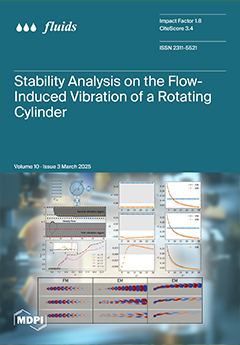This paper deals with laminar forced convection in a rectangular channel through a non-equilibrium thermal gas saturated porous medium. The thermodynamic aspects of this flow, including the entropy generation rate, irreversibility, and exergy, are carefully investigated. The governing conservation equations of momentum, mass,
[...] Read more.
This paper deals with laminar forced convection in a rectangular channel through a non-equilibrium thermal gas saturated porous medium. The thermodynamic aspects of this flow, including the entropy generation rate, irreversibility, and exergy, are carefully investigated. The governing conservation equations of momentum, mass, and energy are solved numerically using the finite volume method. The effects of Reynolds number
(ranging from 100 to 2000), Darcy number
, and Biot number
(from 10
−3 to 10
3) on the entropy generation, exergy, and irreversibility, for which the Gouy-Stodola relation is employed, are then presented. The results reveal that at low
and high
, thermal equilibrium between the two phases is achieved, leading to a reduction in entropy generation and, consequently, less exergy destruction. However, in the limit of high
and low
, irreversibility is significant due to large velocity gradients, leading to greater exergy destruction. Furthermore, it was observed that the thermal non-equilibrium intensity (LNTE) significantly influences entropy generation, leading to critical exergy destruction.
Full article





